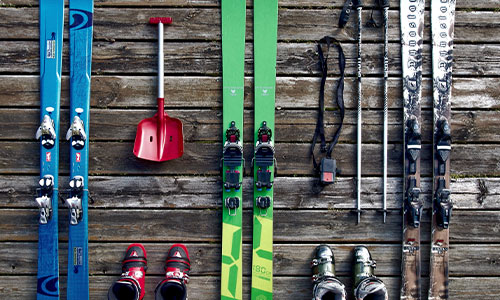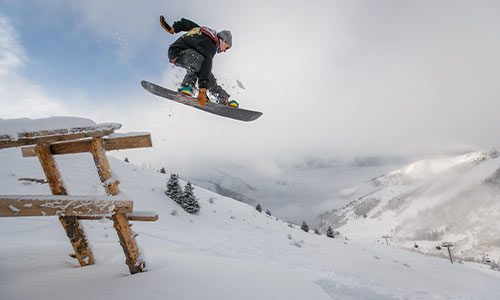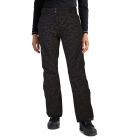Prepare For Your Next Ski and Snowboarding Session
Author
Skiing is a thrilling adventure that can help you make the most out of your winter holidays. With snow-capped mountains, beautiful landscapes, and challenging slopes, skiing provides an opportunity to explore and enjoy the natural beauty of a winter wonderland. Not only is skiing an exciting way to stay active and engage with the outdoors, but it can also be a great way to bond with friends and family. Whether you are a seasoned skier or a first-timer, hitting the slopes can offer a unique and rewarding experience that can leave you feeling refreshed and energized. With the right preparation, equipment, and attitude, skiing can provide a truly memorable adventure that can make your winter holidays more enjoyable than ever before.
If you're planning to go on a skiing adventure, it's important to prepare yourself physically and mentally to make the most out of your trip. Skiing can be physically demanding, so it's crucial to ensure that you're fit enough to tackle the slopes. Regular exercise that focuses on building up your strength and endurance, such as cardiovascular workouts, strength training, and balance exercises, can help you prepare for skiing. It's also essential to stay hydrated and eat a balanced diet to keep your body in good condition.
When it comes to equipment, it's best to rent or buy gear that's suited to your ability level and the type of skiing you'll be doing. This includes skis or snowboards, boots, bindings, helmets, and goggles. Make sure that your equipment is properly fitted to avoid discomfort or injury on the slopes.

Mentally preparing for skiing involves setting realistic goals and expectations for your trip. Be patient with yourself and don't push beyond your limits. Remember to take breaks and rest when necessary to avoid fatigue or burnout. Lastly, stay open to learning new techniques from instructors or more experienced skiers to improve your skills and confidence on the slopes.
Sega Fair-weather, an instructor at Alpinemojo Ski School, stresses the importance of arriving prepared for ski or snowboard lessons. Instructors use several tools to help their students improve, including analyzing the technical, tactical, equipment, environment, physical, and psychological factors. While instructors can control four of these factors, it is up to the student to arrive prepared for the remaining two.

The instructor can improve a student's technique through tips or drills, which falls under the technical category. They may also talk about the line the student takes down the slope to adjust their direction and speed, which comes under the tactical category. Instructors also create a safe and enjoyable learning environment by selecting the best runs for the student, whether it's flatter and easier for those learning something new, steeper for those in need of a challenge, or through the trees if visibility is poor. They also set the mood for a lesson, tailoring their teaching to the student's ability and personality.
To make the most of a ski lesson, students should arrive prepared with the correct equipment and physically ready for the lesson. Ski and snowboard shops can help with equipment selection, as having the wrong skis, board, boots, or poles can hinder progress and make the day less enjoyable. Students should be honest about their level and plans for the trip as their needs will differ if they plan to venture off-piste or if they are a beginner versus a strong skier.
It's also important for students to understand that skiing and snowboarding are physically demanding activities, especially in high resorts like Verbier. Arriving in good physical condition can help students get the most out of their lessons and enjoy their time on the slopes.
-
 Dare 2B Womens Ice Waterproof Padded Ski Trousers Pants£35.48 to £66.80RRP £150.00 Save Up To £114.52
Dare 2B Womens Ice Waterproof Padded Ski Trousers Pants£35.48 to £66.80RRP £150.00 Save Up To £114.52
Author
Categories
- Sport (28)
- Product Reviews (3)
- Team Outdoor Look (7)
- Mike Wild (2)
- Mike Payton (2)
- Suse Hammond-Pears (3)
- Snowboarding (12)
- Latest Offers (105)
- Shop Talk (1)
- Competitions (7)
- Walking (413)
- Lifestyle Fashion (8)
- Travel (86)
- Kit Guides (176)
- Workwear Clothing (6)
- Safety Workwear (4)
- Health/Fitness (289)
- Skiing (91)
- Great Outdoors (1316)
- Cycling (92)
- January 2025
- December 2024
- November 2024
- October 2024
- September 2024
- August 2024
- July 2024
- June 2024
- May 2024
- April 2024
- March 2024
- February 2024
- January 2024
- December 2023
- November 2023
- October 2023
- September 2023
- August 2023
- July 2023
- June 2023
- May 2023
- April 2023
- March 2023
- February 2023
- January 2023
- December 2022
- November 2022
- October 2022
- September 2022
- August 2022
- July 2022
- June 2022
- May 2022
- April 2022
- March 2022
- February 2022
- January 2022
- December 2021
- November 2021
- October 2021
- September 2021
- August 2021
- July 2021
- June 2021
- May 2021
- April 2021
- March 2021
- February 2021
- January 2021
- December 2020
- November 2020
- October 2020
- September 2020
- August 2020
- July 2020
- June 2020
- May 2020
- April 2020
- March 2020
- February 2020
- January 2020
- December 2019
- November 2019
- October 2019
- September 2019
- August 2019
- July 2019
- June 2019
- May 2019
- April 2019
- March 2019
- February 2019
- January 2019
- December 2018
- November 2018
- October 2018
- September 2018
- August 2018
- July 2018
- June 2018
- May 2018
- April 2018
- March 2018
- February 2018
- January 2018
- December 2017
- November 2017
- October 2017
- September 2017
- August 2017
- July 2017
- June 2017
- May 2017
- April 2017
- March 2017
- February 2017
- January 2017
- December 2016
- November 2016
- October 2016
- September 2016
- August 2016
- July 2016
- June 2016
- May 2016
- April 2016
- March 2016
- February 2016
- January 2016
- December 2015
- November 2015
- October 2015
- September 2015
- August 2015
- July 2015
- June 2015
- May 2015
- April 2015
- March 2015
- February 2015
- January 2015
- December 2014
- November 2014
- October 2014
- September 2014
- August 2014
- July 2014
- June 2014
- May 2014
- April 2014
- March 2014
- February 2014
- January 2014
- December 2013
- November 2013
- October 2013
- September 2013
- August 2013
- July 2013
- June 2013
- May 2013
- April 2013
- March 2013
- February 2013
- January 2013
- December 2012
- November 2012
- October 2012
- September 2012
- August 2012
- July 2012
- June 2012
- May 2012
- April 2012
- March 2012
- February 2012
- January 2012
- December 2011
- November 2011
- October 2011
- September 2011
- August 2011
- May 2010
- April 2010
- March 2010
- February 2010
- January 2010
- November 2009
- October 2009
- September 2009


Submit a Comment